| Problem |
Solution |
3) Each figure below is made up of 1 square and 4 congruent isosceles triangles.
The interior dotted lines are fold lines. Which of these
figures can be folded to make pyramids with a square base?
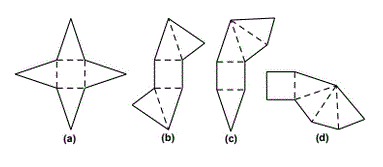 |
Here is a pyramid:
Study it and imagine each of the 4 figures folded into this shape.
Hint: more than one of the shapes can be folded into a pyramid, but not all.
The only figure that doesn't fold into a pyramid is (c) because that upper right triangle, when folded, overlaps the triangle on the bottom.
So, the figures that can be folded into pyramids are
a, b and d
|
4) The coordinates of the vertices of a quadrilateral in
clockwise order are: (0, 3), (4,8), (8,3), and (4, 5).
What is its area?
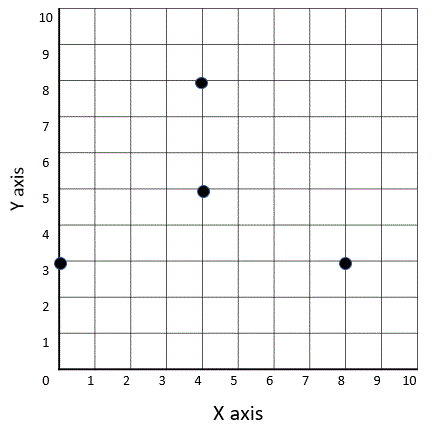
|
Plot the points on the grid and number them.
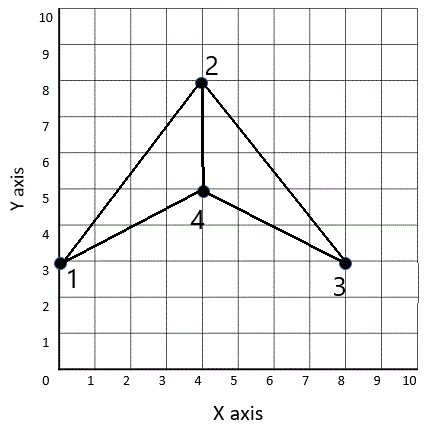 Method 1: Cut into triangles and add:
Method 1: Cut into triangles and add:
1. Notice that the 2nd and 4th points have the same x coordinate = 4.
2. Cut the quadrilateral into two triangles along this vertical y-line (4,8) to (4,5)
(1) = points 1,2 and 4:
B = 3, H = 4, A = 6
(2) = points 2,4 and 3: B = 3, H = 4, A = 6
3. Compute the areas of each triangle and add:
A = 6 + 6 = 12 sq. units
|
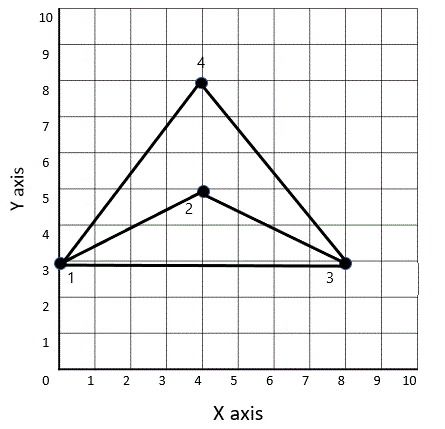 Method 2: Area subtraction:
Method 2: Area subtraction:
Make a large triangle and subtract the missing triangle:
1. Compute the area of the triangle made by
points 1, 2 and 3 = B = 8, H = 5, A = 20
2. Compute the area of the triangle made by points 1, 4 and 3 =
B = 8, H = 2, A = 8
3. Subtract the second from the first to get
the quadrilateral area = A = 20 - 8 = 12 sq. units
|
|
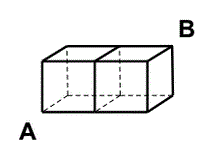 5) The length of the shortest trip from A to B along the
edges of the cube shown is 4 edges. How many different
4-edge trips are there from A to B?
5) The length of the shortest trip from A to B along the
edges of the cube shown is 4 edges. How many different
4-edge trips are there from A to B?
|
1. The number of paths from point A are 3.
2. From that point (assuming you don't go backward
or away from B) there are 2 paths forward.
3. From that point there are 2 paths to get to B.
4. From that point there is 1 path to get to B and you are there!
5. Multiply all these paths together to get the total number of possible paths =
3 x 2 x 2 x 1 = 12 ways
|
|